The theme behind my Children’s book – Zeb, Jet and the Ice-Cream Calamity.
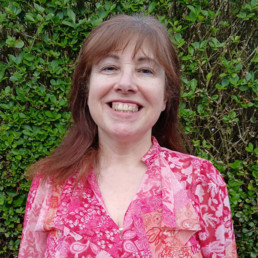
Written by Mirabel Lavelle
Mirabel is a qualified Teaching and Learning Coach, Creative Writing Lecturer, Allergy Awareness Advocate and Author of: Zeb, Jet and the Ice-Cream Calamity. An adventure story aimed at raising food allergy safety awareness. She is also the founder of: writebymirabel.co.uk – Crafting stories: where every voice counts and allergies matter. a website dedicated to the art of crafting stories, especially those that help raise awareness to disability, equity and inclusion.
I am a teacher and grandmother who loves stories. Two of my grandchildren carry auto-injector pens because of food allergies. One day, the older of the two asked me if I would write a story book about allergy. Hence, Jet, Zeb and the Ice-Cream Calamity.
I want to encourage the reader to learn about allergy, to become actively aware of how to safeguard and to include children with food allergies at social events such as Easter egg hunts, trick or treating, and parties without the fear of reaction to food – or worse still – anaphylaxis. I would like the reader to ask:
‘How can we plan a party that children with food allergies can safely enjoy?’
Allergic disease is a disease of the immune system, and it is the fastest growing disease among children in the UK. This condition impairs the sufferer on a day-to-day basis, in many different ways.
Sufferers cannot eat the same food as everyone else unless it has been prepared especially. This has substantial implications. For example, in school during lunchtimes a child may be asked to sit at a separate table because of their food allergies. Outside of school a child may be excluded from social events that centre around food because of a nervous adult.
The culture this creates is that if a child is different in any way, for example by having a dietary requirement, then society will exclude them. New studies are showing certain children, who have experienced anaphylaxis, to display allergy related anxieties and behaviours that are similar to PTSD.
This is why I want to raise food allergy safety awareness. I want to educate so that we can eradicate food cross contamination. This way we can significantly reduce allergy anxiety and promote inclusion at all times.
My story book features a relatable fox cub (Zeb) and playful puppy (Jet) as characters, rather than humans, because of the subject matter. Jet has a food allergy and when Zeb meets Jet, he learns how to be allergy safe aware. This exciting adventure encourages children to want to help Jet by telling others about how to keep him safe. It is an adventure that celebrates diversity, equity and inclusion.
I reinforced my message by creating a joyous song. The chorus shows how to significantly minimise food cross contamination. Children love music, the catchy chorus carries the central and crucial message of the book.
This book invites children to learn about allergy safeguarding by finding out about simple yet responsible behaviour around allergic kids. One example is not to leave wrappers, which may contain allergens, lying around but to bin them responsibly. My message to the reader is about building a society of caring individuals so that no one has to get sick because of the carelessness of others.
I added differentiated tasks to encourage readers to ask more questions about allergy. I want children to have fun whilst they learn. After all, it is through stories and through education and by putting ourselves in someone else’s shoes that we become more understanding of others.
Going into schools to deliver allergy safety events is a very rewarding experience for me because of the positive response from children and staff. They are providing me with a wealth of exciting ideas on how to continue taking my campaign of safe allergy inclusion, forward.
When I first wrote the book, I wanted it to be a key educational resource as well as an entertaining adventure. I aimed to provide schools and communities a point of reference that raises awareness and encourages people to want to know more about allergies and their impact. I needed to ensure that allergy sufferers are included in all activities that everyone their age enjoys. Since taking the book and the presentation into schools and libraries, it continues to inspire a range of immersive activities such as art projects, drama, puppet shows and animation.
This book highlights equity and the tasks that follow the story are focussed on finding ways that are fair and inclusive for Jet. The story affords time to explore feelings, such as Zeb’s feelings after Jet got sick. It creates an opportunity for discussion, for thinking, for empathising, and for bringing about positive change.
Useful Links:
The Natasha Allergy Research Foundation (narf.org.uk)
The Benedict Blythe Foundation Allergy & Education Foundation | Benedict Blythe Foundation
The Sadie Bristow Foundation: Don’t Be Afraid to Be Great
Don’t Assume…
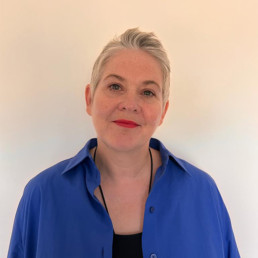
Written by Gerlinde Achenbach
Gerlinde Achenbach is a senior education consultant and former primary headteacher. Her career spans more than 35 years, with over 30 years teaching in schools. Since 2021 she has been supporting schools across the UK with Equity, Diversity & Inclusion, specifically LGBTQ+ inclusion. Her expertise is in leadership and changing school culture.
It is a reality that every LGBTQ+ stakeholder within a school community – child or young person, member of staff, visitor, parent or carer – is on the receiving end of constant heteronormative messaging. This isn’t because schools are not complying with their Public Sector Equality Duty or because they’re not focused on being inclusive. It’s because the world is set up to portray ‘usual’ as heterosexual.
The Oxford languages dictionary defines heteronormativity as: “denoting or relating to a world view that promotes heterosexuality as the normal or preferred sexual orientation.”
Heteronormativity permeates every aspect of school life. It’s in the images on our walls, it’s in the things we say and in what we do. Put simply, there’s an unspoken acceptance that it is ‘the norm’. It confirms for us that heterosexual relationships dominate the human experience. It also reminds us of the relationship between heterosexuality and gender inequity for women and girls through history. We see this every day, where gendered language, stereotyping and imbalanced expectations still dominate our lived experience in the wider world. We like to think we work hard to challenge this in our schools…but are we doing enough?
What can heteronormativity look like in schools?
Environments
- Most images of families show mums and dads. This can be on ‘welcome’ posters or in books and images on display.
- We find ‘corporate’ cartoon images depicting (stereotypical) boy, girl, boy, girl across school spaces.
- Books and literature have not been evaluated in terms of how representative they are of different types of families or identities.
Systems and Policies
- In primary schools we have a habit of assuming (unless told otherwise) that a child has heterosexual parent(s) and that our children will end up in heterosexual relationships.
- We include ‘mother / father’ on application forms and permission slips.
- The words ‘Mr & Mrs’ are on the tips of our tongues when referring to families.
- Our school uniform policies state gendered expectations for girls and boys, even down to shoe styles.
- Our staff dress code does the same.
- We appoint a Head Girl and a Head Boy.
- Our website staff lists denote marital status first – Mrs, Miss, Mr – and we have the same on classroom doors.
Communication and Language
- We welcome our children with “Good morning, boys and girls” and our staff, or parents and carers, with “ladies and gentlemen”.
- The phrase, “Tell / give this to / show / ask your mum and dad” rolls off the tongue for most school staff.
- Staff address girls as ‘darling’, ‘princess’, ‘sweetie’, and boys as ‘mate’, ‘mister’, ‘dude’.
- We hear the terms ‘Headmaster’ and ‘Headmistress’. We address staff as ‘Sir’ and ‘Miss’.
- We hear adults calling for ‘a couple of strong boys’ for certain tasks around school.
Practice and Culture
- We line up our classes in boys’ and girls’ lines, or in a boy, girl formation.
- We seat them on their carpet ladybird places or at tables in the same way.
- We separate and organise children by gender for the most random of reasons and activities.
- We organise role play, construction and crafts with different genders in mind, albeit subconsciously.
- We appoint class names of famous scientists, authors, sports people or musicians where the majority are male (and straight).
- The staff culture feels fixed, exclusive, cliquey and difficult to break into.
- Staff congratulate themselves on the way they have always done things.
I have deliberately not set out here inclusive versions of the above examples. They are a starting point for whole staff thinking and they’re guaranteed to promote worthwhile discussion. It’s important in our schools to do the hard work required, challenge heteronormativity in all its guises and ask the following questions:
- Might a child with same-sex parents feel quietly excluded in our school?
- Will their parents feel welcome?
- How about a child who has lost a parent, or a child who is care-experienced?
- Have we removed assumptions in all our interactions with families?
- Can a member of staff, whatever their sexual orientation or identity, can be their authentic self at work?
- Are our language and expectations truly gender-inclusive?
- Is our inclusive approach understood by all groups of staff in their varying roles across school?
Why does this matter? It matters because of the need for us all to feel we belong in the places where we, or our loved ones, spend a good deal of time. Marian Wright Edelman coined the phrase, ‘You can’t be what you can’t see’, and this matters if you rarely see yourself (child or adult) or your family represented in your school. Representation is validation.
It matters because subliminal messages such as those received (through unthinking words, gendered phrases and activities defined by gender) by girls and women, or by those for whom gender is not fixed or for whom gender causes anguish, can be damaging and self-fulfilling over time.
Be where you are embraced, not celebrated: exploring use of language when developing an equality ethos
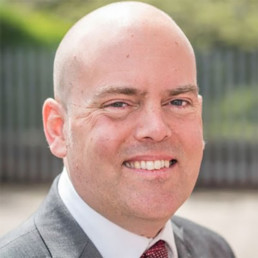
Written by Andrew Moffat
Andrew Moffat has been teaching for 25 years and is currently PD Lead at Excelsior MAT. He is the author of “No Outsiders in our school: Teaching the Equality Act in Primary Schools” and “No Outsiders: everyone different, everyone welcome”. In 2017 Andrew was awarded a MBE for services to equality and diversity in education and in 2019 he was listed as a top ten finalist in the Varkey Foundation Global Teacher Prize.
Can we talk about the word celebrate?
I am a big supporter of Diverse Educators, but the use of the word celebrate in the tag line I think is not needed, in fact I believe it could be detrimental to our aims. “Be where you are celebrated…” Really? Do I need to be celebrated? For what? Being male, being gay, wearing glasses? Really?
Diverse Educators are not alone using this word; I used it in the past. My first resource on teaching LGBT equality in 2006, “Challenging homophobia in Primary Schools” (published by Coventry City Council in 2007 and by Birmingham City Council in 2010) states in the introduction, “Every child benefits from an ethos of mutual respect and a celebration of who they are.” (p2) and later, “Children need to understand that the world is full of different people who like different things and we should celebrate that fact with them.”(p5)
In my first properly published book, “No Outsiders: Teaching the Equality Act in primary schools” (2015) I state, “We have to be delivering a curriculum where diversity and difference are celebrated.”
But by 2020 I had changed my mind. I was trying to step away from the use of the word celebrate trying to find alternative words. Why? Because I was facing significant challenges to my equality work from a religious perspective, and I had to find a way to bring people on board.
Let me explain…
2019 was a very difficult year. RSE ruined my life! Everything was going fine until new RSE guidance from the DfE suddenly put LGBT+ education into the spotlight. Despite my school successfully running No Outsiders for four years previously to 2019, suddenly there were huge protests outside my school against it. “Stop sexualising children!” “My child, my choice!” “Stop indoctrination now!” “Stop No Outsiders,” read the placards. The protests lasted for 6 months and then fizzled out. Today, that school runs No Outsiders successfully and it’s like the protests never happened. A 2022 Ofsted report for the school opens with the line, “Children say there are no outsiders here and that everyone is welcome.”
During the protests, I received a letter from Mike Smith, a vicar from Cheshire who was also a chair of governors at a primary school. Mike was writing to express support but in the letter, he also mentioned the language I was using. Mike pointed out that I was asking schools to celebrate diversity and that meant in turn, asking schools to celebrate LGBT equality. As a Christian, Mike argued, he could not ‘celebrate’ LGBT people as he believes marriage is fundamentally between a man and woman. However, he could tolerate LGBT people; he wanted to be an ally. Mike asked me to consider using the word tolerate more, rather than celebrate.
Hmmm….
My initial reaction was absolutely not! I have never liked the word tolerate. Tolerate is word used when you are putting up with something; a buzzing noise, rain. I am not going to teach children to tolerate each other. It feels so wrong.
But I was in the middle of this mess at the time. People shouting at me from all sides. And maybe stopping and listening is the best policy. So, I got in contact with Mike and we talked. Mike was brilliant. He really shifted my thinking on this as we came together from two very different places and tried to find a way through.
Mike asked me, “Do you need to celebrate to feel accepted?” It’s a good question. I’ve worked in schools for nearly 30 years, and we’ve always blithely said, “We celebrate diversity,” whatever school I’ve been in. But let’s just step back for a moment and ask what that looks like. How do you stop that being tokenistic? ‘Ooh it’s pride month – get the rainbow flags out!’
The other problem here is that we don’t live in that rose tinted world. Homophobia exists, racism exists, misogyny exists. There are some people in our communities who simply do not wish to celebrate Pride month or celebrate gay people existing, and they should not be forced to. As an adult, you are not forced to join a pride parade; you cannot stop it happening and there are laws that protect the existence of LGBT people, but you do not have to celebrate that. You just need to accept it happens.
Should schools be celebrating LGBT+ people? If we are truly preparing children for life in modern Britain, shouldn’t we instead be teaching children that Pride exists, asking why it exists and recognising that some people join pride parades as a means of protest, some as a means of celebration, and some people don’t agree with it. Children should form their own opinions. As long as a child is not othering someone, judging and saying they are wrong for being who they are, I think it’s ok for a child to choose not to celebrate pride. Pride exists and will be celebrated whether that child joins in or not. You could argue a debate about Pride where children are encouraged to disagree, only strengthens the arguments for Pride existing!
There was a perception at the school where we had protests that we were forcing children of faith to celebrate LGBT equality. I don’t think we were doing that, but perception among parents is everything in schools, isn’t it. After conversations with Mike, together we came up with an alternative word to celebrate which was “accept”. At my school we spoke to parents about removing the word celebrate and we changed displays from “We celebrate diversity” to “We are diverse” or “We accept each other’s differences”. I really tried to show that I was listening and changing my language and the parents appreciated my efforts. I wrote a chapter in the second No Outsiders book “All different, all welcome” (2020) called “Tolerate, celebrate, accept” where I explained what I was trying to do. Lots of schools, particularly where there was a large faith cohort, told me they liked this strategy.
But I was never happy with the word “Accept”. I was constantly searching for an alternative word and then it came – “Embrace”. I think “We embrace diversity” is fantastic. You can embrace something without necessarily agreeing with it. You don’t have to celebrate it.
So, since 2021, embrace is the word I have been using. In my own school hall we have a great display (see below) with the words “We are different – we belong here” which is perfect. I think celebrating can be triggering for some people, particularly when talking about LGBTQ+ and faith, so I have simply removed it.
I always discuss this in my training, and I always say, “Of course, I may be wrong about this!” I have been wrong in the past and maybe I’m wrong here, I think it’s certainly worth a discussion and I may change my mind in future. I also want to make clear that I absolutely celebrate Pride every year myself. I have been to three Prides this year and I love them. I love being gay and I’m very proud to be gay and to be out to people. But I don’t need you to celebrate me. I do want you to accept me without judgement, but I don’t need a clap!
Find out more about No Outsiders: www.no-outsiders.com
Find our new No Outsiders scheme of work for 2024 “No Outsiders: We belong here” by Andrew Moffat (Speechmark, 2024)
Watch the film of Mike Smith talking about our conversations and language https://www.youtube.com/watch?v=1PeUmCprYfo&t=2s
Talking Race and Racism with Children - when do we start?
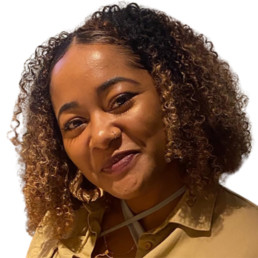
Written by Omena Osivwemu
Former Primary Teacher, Humanities Lead, Researcher. Author of 'Decolonising the Curriculum: A Comparative Case-Study of Black Learner and Educator Perspectives and Experience in London and Johannesburg' in The BERA Guide to Decolonising the Curriculum.
This question has played on my mind for a while; at a conference of educators reckoning with race, a Black senior leader who is also a parent asked “when is the right time to talk to my children about race?” This stuck with me and the academic on the panel looked to me, as an experienced Primary School teacher to respond.
Given my lived experience growing up Black in Northern England, training and teaching across the North and the Midlands, the answer seemed obvious to me.
In short- right away! As soon as children are absorbing language, learning values and copying behaviours.
As soon as we teach toddlers what is a boy and what is a girl, that is the social construction of gender- even if you opt for a more gender-neutral or fluid approach- that is still teaching them difference. When we teach children to share; be kind; tell the truth etc., all values we deem to be ‘right’, we should also be teaching them that sometimes not everyone will be kind, share or tell the truth. At times this can be due to our differences. But difference is a wonderful, necessary part of life!
Of course, discussions should be age-appropriate in language children understand and use. ‘Sulwe’ by Lupito Nyong’o is a beautiful book, aimed at young children and explores themes of ‘race’ and colourism. Now, there is a wonderful array of diverse books available for all ages! As children get older, we can then build on their racial literacy, empowering them to make some sense of the social construction that is ‘race’. For adults, I would recommend ‘How to raise an anti-racist’ by Ibram X. Kendi as a great place to start.
As soon as we read traditional tales to children, let them watch YouTube, TV or films, we are passing on messages about society, how people interact and what is deemed ‘right’ and ‘wrong’. When children can describe something as red, green, blue, black and white; they can and will use this language to describe differences between people. It may not be ‘accurate’ to the adult lens, for instance as a young child in a Black, mixed family, I would draw my father’s dark brown skin as purple and my mother’s very fair brown skin as pink.
One of my earliest memories as a 4 year old (contextualised by my mother’s memory) at a mostly White Nursery, was feeling different. Too brown, with hair that was too dark and curly, and eyes that were too dark, compared to the teachers, other children and most importantly the blonde, blue-eyed dolls which I adored! Then, when the teachers with good intentions, changed the play to ‘Curlilocks’ so that I could play the character Goldilocks, I knew I wasn’t ‘right’- I didn’t fit. If Black and brown children aren’t too young to experience or witness racialisation or racism, nobody else is too young to learn about ‘race’ and racism.
Later on during undergrad’, volunteering in local primary schools in Northern Lancashire, as soon as I walked into classrooms, children as young as 4 would stare wide-eyed and mutter under their breath “she’s Black!”. Throughout my teaching career across England and Spain, most times I was the only Black teacher children had seen. The responses have varied from positive, such as expressing their love for my curly hair, inquisitive questions and collaborative cultural exchange. To the negative, for example young children avoiding touching my skin when I gave them something, or 6 year olds ignoring me as though they didn’t understand my English, because as one boy put it, I was “from Africa”.
I recognise that in Black and brown majority spaces like London, experiences such as mine may be less common. However, if parents, the media, film, books etc. are socialising children as young as 3 and 4 to understand brown skin, or Blackness, or religious dress, or simply human difference such as accents, as ‘bad’ or negative, then we too should be equipping our children with the understanding that such a belief system (white supremacy) exists and continues to prevail- albeit gently. We should be uplifting Global Majority children to feel proud of their cultural and ethnic backgrounds, histories and identities. We should help children to contextualise what they are seeing and embolden them to have high self-esteem and confidence when facing barriers/ discrimination.
In the same way that we acknowledge teaching children ‘stranger danger’, online safety, how to respond to bullying, physical and mental wellbeing, and healthy relationships in order to protect them from harm and prepare them to safeguard themselves; we should also be empowering all children with the language and understanding to know when discrimination and racism are happening (unfairness / unkindness in children’s terms). In the same way that far-right rioters and sympathisers have taught their children, as we saw this summer, to attack, abuse and harass Black, brown, migrant, Muslim peoples; we too should be teaching our children from early why it is happening and how they can respond.
Inclusion Love Languages
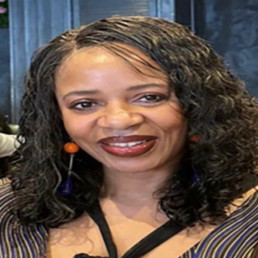
Written by Caroline Anukem
Caroline Anukem is Equity, Diversity and Inclusion Lead at Beaconsfield High School in the UK. She is a driving force, a change-maker, and a relentless advocate for equity.
Forget Acts of Service: The Love Languages Revolutionising Inclusion
Tired of the same old diversity and inclusion (EDI) initiatives that fall flat? It is time to do away with the generic and delve into a framework that speaks to the heart of belonging: Inclusion Love Languages.
Imagine this: You walk into a conference feeling a pit in your stomach. The name tags are impersonal, the panels lack diverse voices, and you struggle to find someone who “gets” your background. This is the opposite of inclusion. Now, picture a different scenario. You are greeted warmly with your preferred pronoun, the agenda reflects a range of perspectives, and breakout sessions offer opportunities for collaboration across differences. This – this – is inclusion in action.
Beyond Tolerance: A Celebration of YOU
Inclusion should not be about simply tolerating differences. It is about actively celebrating them. The “Love Languages” model, popularised by Gary Chapman, categorises how individuals receive and express love. I propose adapting this framework to inclusion, recognising that everyone has preferred ways of feeling valued and respected in a space.
What are YOUR Inclusion Love Languages?
Just like some crave words of affirmation from a partner, others might feel most included through mentorship opportunities or invitations to social gatherings. Think about your own preferences. Do you thrive in environments with clear expectations and open communication (Acts of Service)? Or do you feel most valued when your unique perspective is acknowledged and celebrated (Words of Affirmation)?
Understanding your own inclusion love language is just the first step. Now consider how you can identify and address the preferences of others. Perhaps a colleague or a fellow student feels most included through casual check-ins (Quality Time), while another appreciates being included in focus groups (Gifts – offering opportunities for contribution).
From Feel-Good to Functioning: The Power of Inclusion
True inclusion is not just about creating a warm and fuzzy atmosphere. It creates a sense of psychological safety, where individuals feel comfortable taking risks, sharing ideas freely, and being their authentic selves. This, in turn, unlocks a treasure trove of benefits:
- Innovation Unleashed: Diverse perspectives combined with psychological safety create a breeding ground for ground-breaking ideas.
- Engagement on Fire: Feeling valued motivates people to bring their best selves to work, leading to increased productivity and engagement.
- Collaboration Takes Flight: A sense of belonging improves teamwork and inevitably reduces conflict, thus creating a more positive and collaborative environment.
Speaking Your Inclusion Love Language: Building a Thriving environment
By understanding the “inclusion love languages,” we can move beyond a one-size-fits-all approach. This reframing equips us with practical tools to cultivate a culture of belonging, the foundation for a truly thriving and equitable working or learning environment.
Pride Month 2024 - Responding to homophobic language: guidance for schools using Oracy and No Outsiders

Written by Andrew Moffat
Andrew Moffat has been teaching for 25 years and is currently PD Lead at Excelsior MAT. He is the author of “No Outsiders in our school: Teaching the Equality Act in Primary Schools” and “No Outsiders: everyone different, everyone welcome”. In 2017 Andrew was awarded a MBE for services to equality and diversity in education and in 2019 he was listed as a top ten finalist in the Varkey Foundation Global Teacher Prize.
Ensuring equality for all cannot be achieved if any group of people feel they are unseen, unwelcome or feel targeted because of the person they are. As teachers, we strive to ensure that everyone feels seen, everyone feels welcome, and no one feels they have to hide their true selves, or parts of their identity.
In preparing children for life in modern Britain, we need to be clear and consistent in our efforts to make schools a safe place where children understand there are different ideas in society and prejudice may exist in the outside world, but prejudice and discrimination do not exist here, because in our school, there are “No Outsiders” and everyone is welcome.
Children are allowed to hold different views. I am a big champion of oracy as it encourages children to see both sides of a debate and understand it is possible to hold two views at one time. However, while different views are embraced, the othering of a group of people is not allowed. A child can disagree with a point of view and still show respect; this is the golden thread of a no outsiders ethos.
If a child chooses to use homophobic language, this must be tackled immediately. Children must understand there is no tolerance of prejudice at our school. It is the job of any adult to respond to homophobic language, as this is a safeguarding issue (KCSIE, 2023, “Children who are LGBT” page 51),
A quick response is; “Excuse me?” or, “What do you mean by that?” followed by, “And what do we say at our school?” to which the expected reply is “There are no outsiders”. Reiterate, “That’s right, there are no outsiders here, so you need to think about the language you are using. How are you going to put that right?”
All homophobic incidents should be recorded, and parents informed.
If homophobia arises in a debate where no individual is being targeted but there are attitudes forthcoming that need to be addressed, make sure they don’t go unchecked. An oracy framework enables us to challenge such attitudes effectively by asking the class to respond; “Would anyone like to respond to that?”. If the comment is offensive, for example if a child says, “gay people are wrong” it’s important that the adult responds immediately along the lines of;
“Can we think about the language we are using here… those ideas may exist in the outside world, but we need to be really careful about the words we use here. To say something is ‘wrong’ is different to saying, you ‘don’t agree’ with it. Do you want to re-phrase so that you are not othering anyone or being offensive?”
“What does the law say about this?” (The Equality Act, British law says it’s ok to be LGBT)
“What do we say at our school about different people?” (We say there are no outsiders, and everyone is welcome here.)
It’s vitally important the teacher addresses the attitudes while not giving their own opinion so we don’t get in to an argument or lead the children down any particular path. What we need to do instead is remind children it is ok to hold different views (“and that’s what makes this debate so interesting”) and we can still show respect and non-judgement. It’s ok to disagree with one another, the important thing is that everyone still feels they have a place here, including the child who is being offensive. It is the child’s views that are not welcome; the child is still welcome.
If a child brings their faith into the discussion; “My religion says it’s wrong”, respond in this way:
“You’re right, there are different views about this in different religions. And that’s the best thing about living in the UK- we have different views and beliefs, freedom of speech and democracy, and we have the Equality Act which protects religion and belief, so people are allowed to hold those views under British law. Who else is protected under the Equality Act? (disability, age, race, pregnancy and maternity, marriage and civil partnership, sex, LGBT) hmmm that’s interesting isn’t it – on the one hand you have religion and belief and on the other you have LGBT … both protected, both allowed… so I suppose we have to find a way to respect both views. We can co -exist without saying the other is wrong….”
And then open out the conversation, move it along using the oracy technique; “Who wants to build on that?”
Keep coming back to “That’s why we say there are no outsiders… we can have different opinions, and we can still respect each other. No one is pushed out because of their religion, their race, or because of their sexual orientation.”
I recognise that these conversations are not easy but they are important and we need to be having them with our children. My advice is to practice responses with each other as a staff team.
Here are some useful assembly links from www.no-outsiders.com:
https://no-outsiders-assembly.blogspot.com/2024/05/pride-2024.html
Assembly pictures : Football shirt (no-outsiders-assembly.blogspot.com)
Assembly pictures : football (no-outsiders-assembly.blogspot.com)
Assembly pictures : Bathroom (no-outsiders-assembly.blogspot.com)
Assembly pictures : Beano (no-outsiders-assembly.blogspot.com)
Assembly pictures : LGBT history month (no-outsiders-assembly.blogspot.com)
Assembly pictures : What is homophobia? (no-outsiders-assembly.blogspot.com)
Assembly pictures : Curly hair (no-outsiders-assembly.blogspot.com)
https://no-outsiders-assembly.blogspot.com/2024/06/veteran.html
Make Yourself Heard
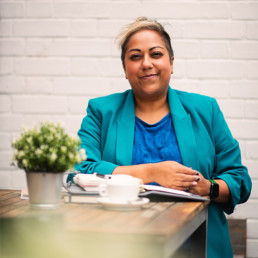
Written by Bennie Kara
Founder of Diverse Educators
Public speaking is a fact of life in the teaching profession. We speak to students all the time in classrooms, but every so often, we are called to deliver assemblies, or to deliver training to staff, or to speak to governors. Some of us are supremely confident in talking in front of students, but shudder at the thought of talking to a group of adults. If you’ve ever felt a sense of dread when you are asked to stand up and deliver spoken content outside of the classroom, you’re not alone. According to the British Council, 75% of us suffer from anxiety about talking in front of a crowd.
Speaking in front of the crowd may tap into a range of fears. We might fear being nervous and how that might affect our assignment. We might fear judgement, or fear that we won’t get everything across that we want to say. We might fear that people won’t listen. We might fear forgetting what we are saying in the moment, stumbling, freezing, feeling embarrassed. These are valid fears and affect most of us.
Whose voices are valued in the public space? Some people are less confident in their speaking abilities because their voices have been silenced. In the UK, global majority teachers work in a predominantly white British teaching workforce; we know the statistics on the ethnic make-up of leadership teams in education. Global majority teachers may suffer from the voicelessness that is part and parcel of existing in marginalised groups. This isn’t just true in terms of race and ethnicity; it is also true for sexuality, gender, disability, and neurodiversity.
Voicelessness erodes confidence. So it is hugely important that we learn how to find a voice in the public space and to feel like we belong there.
Finding your message
Regardless of the occasion, it is important to define the message. Speaking in a staff meeting, delivering a talk to parents – what is it that we want to get across? Not just in terms of the information, but also about you. How are you defining your leadership in the moment through what you say and how you say it?
The message might be small, or it might be momentous. In either case, we need to find ways to define a sense of who we are as engaging speakers and to ensure that we can convey our message effectively. This takes thought, planning, and crucially, constructive practice.
The best public speakers have elements in common. One of the most powerful tools in public speaking is your ability to tell a story. Storytelling is vital in public speaking, in the appropriate contexts. An assembly without a story, a keynote without anecdote can feel dry and impersonal. The most skilled public speakers I have encountered know how to weave a story into the talk with a deftness and ease that seems intuitive.
But storytelling is not intuitive for all. Some people are completely comfortable in selecting anecdotes, examples, stories, tiny useful narratives for the public engagement. Others have to think more carefully, but that careful process can lead to brilliant, engaging public speaking.
The Diverse Educators ‘Make Yourself Heard’ Course
Designing this course, for us, means that we can support you in developing the right mindset for public speaking and provide you with practical strategies to make yourself heard. It aims to develop a voice with you in small groups so that you have the chance to listen, learn, practise and hear feedback.
If you would like support in developing your voice, join us on the ‘Making Yourself Heard’ course using the details below:
Monday 15th January and Monday 11th March 4-5pm
Part 1 – Monday 15th January 2024 4.00-5.00pm
The first session is an intensive look at how you can plan, develop and deliver talk in public so that you can create impactful messages.
Part 2 – Monday 11th March 2024 4.00-5.00pm
This second session aims to support you in considering how to speak impactfully in public. It will cover planning, rehearsal and delivery style in a safe, supportive space with fellow educators.
Nb/ Both sessions will be held on zoom, they will be recorded so purchasing the recording is also an option if you are unable to make either of the dates.
Supporting Parental Engagement for EAL Students
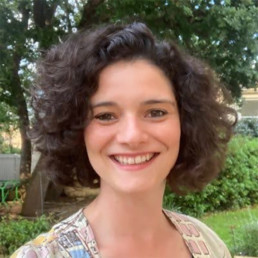
Written by Emma Sheppard
Emma founded The MTPT Project, the UK's charity for parent teachers, in 2016 when on maternity leave with her first child. She has 12 years experience as an English teacher, Lead Practitioner and ITT Lead, and now runs The MTPT Project full time.
I’m now into my third year of immigrant living, having relocated to France with my family in 2021, and – amongst all the other rather enormous changes – one of the most insightful experiences has been navigating the French education system with two children now in infant and primary school.
For context, our move to France marked the first time in twelve years that I hadn’t started September as a teacher. As a consequence, it was also the first time as a mother that I had been responsible for all the school runs, dropping my children off at their class, rather than breakfast club or handing over from an after school nanny. My children are bilingual, thanks to my French husband, and my French is competent, but – oh my! – have I felt the panicked feeling of perpetual confusion, catch up and miscommunication over the last two years!
Of course, having previously worked in schools with a high percentage of EAL, bilingual and multi-lingual students, and even managed our EAL department, it has been fascinating to be on the “other side”. But this insight has pertained, not to my children’s experience (indeed, my daughter is arguably more comfortable in French than in English), but to how we can support the parents in our communities who may not be fluent English.
Here’s what’s been really helpful for me, as the “F(French)AL” parent at the school gate…
Information Evenings
A short information evening early on in the term where parents get the chance to see their children’s classroom, leaf through their books, visually take in which book is the planner, which is for reading, what homework might look like etc., is a great starting point. It provides the opportunity for parents to demonstrate their level of English, and for teachers to take note of any families that might need additional support in clarity of communication. It also introduces parents to each other so that families speaking the same language can find each other and build community, or get added to the class WhatsApp group so they don’t miss out on important reminders or get togethers.
I make a point of speaking up at these meetings, and talking to the teacher afterwards so that they can really hear the extent of my clumsiness in French, but some parents might not feel comfortable doing this. Quietly engaging with parents as they come in, or leave the meeting with more than a “hello”, “good bye” can be a good way for teachers to get a better idea of how much English our families have.
Asking all parents in these meetings, their preferred means of communication – email, telephone, in-person, notes in planners – is a sensible way to secure clarity of communication from the start. Some parents may be able to speak and understand English confidently, but their literacy skills may be weaker. Some parents may be adept at using Google translate and balk at telephone conversations. Equally, for our native or fluent English speakers, email may be far preferable in a busy working day, to the interruption of a telephone call.
At the School Gate
The relaxed, conversational moments at the school gate are a great opportunity to show with smiles and gestures that students have had a great day, or to point out an important piece of information in a letter going home, or even to tackle challenges. This might be normal practice at primary level, but is particularly helpful for parents without much English who may otherwise have no means of knowing how school is going.
The hovering time afforded to me by the physical presence of teaching and support staff at the gate of my children’s first school meant that I was able to get to grips with how school lunches worked, wraparound care, strike days, when to bring in packed lunches, what on earth the system of cover teachers was in France. Remember that different countries have hugely different approaches to all aspects of education, and ways of doing things outside the classroom might be completely alien to some of our families – they were to me!
At secondary level, it might be trickier, especially beyond KS3 where students are more independent, but knowing which parents do collect their students, and swapping in a gate duty once in a while is a great opportunity for relationship building.
Inclusive Homework
Never have I had such thorough French lessons as when my son started CP, the equivalent of Year 2 when children learn to read in France. Every evening, he was required to read through syllables and increasingly complex passages from his Taoki text book. My pronunciation, vocabulary and understanding of French linguistics improved immeasurably over this year, even if I still can’t differentiate between the different ‘oo’ sounds. I now have two miniature teachers, as well as the shadow of their teachers to support my progress in French.
Homework activities – and resourcing these effectively – that allow parents to learn alongside their children, even if they are doing this surreptitiously rather than pro-actively, are a great way to boost parents’ own language skills.
Celebrate Home Languages
Yes, yes, I’m an English teacher and will leap at any chance to read a story and perform in front of an audience, but the jokes from parents and teachers about helping them to improve their English have resulted in a termly story-time slot for three year groups in my children’s current school.
As English speakers, we’re in the privileged position of speaking the global language of business, and as such, English is a valued language in most countries. Unfortunately though, this means that we look down – as a general culture – on other languages or consider them irrelevant.
This contempt is interlaced with prejudice, and I’ve definitely been on the receiving end of light-hearted mockery or messaging coming through my children and their friends, that indicates that these attitudes are also present in France. It creates tension, wariness and defensiveness and I’m incredibly conscious of the parents and teachers who make room for me, and are generous with my language – allowing me to make mistakes and feeding me vocabulary when I stumble – and those who look at me with fear or discomfort when I begin talking.
Story time has provided an opportunity to celebrate English – I deliver with props and songs and emphasis, and follow-up worksheets – and the children love it and share this enthusiasm with their families. Not all parents will be interested or available for a set up like this, but events like World Book Day, a Home Cultures or International Day, are great opportunities to invite primary school parents to come in and tell a story in their home language. At secondary level, this could take the form of a drop down day or afternoon where parents, students and teachers set up a national market place stall of treats, games and language challenges for students to explore.
Offering community languages as an optional GCSE is also a hugely important signal that other languages are valued in your school. Parents need to be informed of how their can support their children with this extra-curricular commitment, and the importance of speaking, reading and writing the home language. Some parents might even be interested in supporting with language clubs, additional tuition, mock paper marking, or speaking exams.
Most importantly, remember that language limitations don’t make parents lesser, and it is definitely not our role as teachers to dictate how much English our students’ parents should speak, or the languages that should be spoken at home. Bilingualism and multilingualism are a gift, and “Time and Place” bilingualism – where specific locations (e.g. home and school) – are delineated for one or other language is a tried and proven method for building native fluency in more than one language.
Parents’ English may improve over time, or they may be very content with the level of language they have. This may be particularly true if they have secondary aged children and school is the only reason they need to understand or use their English. With small adjustments – many of which are attitudinal – we can embrace the parents of our EAL students and facilitate inclusive environments where they can engage with their children’s education in a way that feels appropriate to them.
Woke, but not too woke?
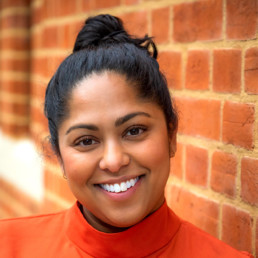
Written by Bilkis Miah
Bilkis brings a powerful perspective to the table, shaped by her upbringing as a British-Bangladeshi immigrant. With experience in both management consulting and the education sector, she offers a rare blend of expertise and cultural insight. Her unwavering commitment to breaking down barriers and challenging norms has positioned her as a powerful voice for change. Bilkis is not just a thought leader, but a driving force for positive impact, inspiring and empowering communities everywhere to re-imagine what is possible.
Inclusivity, or ‘wokeness’ as it’s come to be known, isn’t political correctness gone mad, it’s an essential move for our children.
To see how ‘wokeness’ is perceived in education, you only have to open the newspaper to see that Robert Halfon, Chair of the Education Select Committee, condemned the use of the term ‘white privilege’ last year. Halfon claimed – and this is as much as I can agree on – that there is an ‘opposite reality [to privilege] for the white working class across society’.
But surely this is a question of semantics? Isn’t it more important to make sure we’re not entering a class war, and pitting one group against another? Using terms like ‘white privilege’ isn’t the reason why so many white working-class children are failing. It’s a systemic problem, including underfunded schools, economic inequality, and the lack of opportunities for social mobility.
Understanding communities
So, what’s even more important is that we come up with initiatives and programmes that help future generations. For this to work, it’s important to listen to the community, such as teachers and parents, but also to ask children what they need. We need to understand the context that is breeding such inequalities, and let communities know that their voices are being heard. We’re all complex and layered humans, and there are nuances to navigate. For example, in Tower Hamlets where we’re based, there is a majority British-Bangladeshi and white working-class population. Things like living in an intergenerational home, or having parents who have little or no formal education are real issues that our children have to deal with. When we asked parents what they were worried about, it was the same common theme – they were worried about losing their children to a world they didn’t understand.
But there needs to be impact on beliefs and understanding the community has over these issues. It has to reach communities beyond the school gates, it can’t just be up to teachers. This is where we saw an opportunity to take parents and carers from all backgrounds on a journey to clearer awareness; one that helps communities understand what we mean by diversity and inclusion and to have the tools they need when they come across it in their lives. We do through our home activity kits. The kits encourage families and children to think and learn about themselves and the world around them through fun, paper-based activities. Importantly it doesn’t centre around having digital access – digital poverty in our community is a real obstacle – rather, the focus is on spending quality bonding time away from the screen through activities like journaling, reading and art to name but a few.
Real-world wokeness
Last year we saw St Paul’s Girls School renaming their ‘head girl’ position to ‘head of school’. This may seem like a superficial change, but the reasons behind it are key. And no, this isn’t ‘political correctness gone mad’. It’s really important that we don’t define our pupils by gender, race, religion, sexuality, class or ability. All the stereotypes that come with these narrow categorisations have wider societal implications. By changing the title from ‘head girl’ to ‘head of school’, staff are saying to their pupils, ‘We recognise you, and you can achieve anything regardless of your gender’. It’s not boxing girls into certain roles, or qualifying success with terms like ‘girl boss’ – you’re a boss, period. This is so important when we think about a healthy, diverse workforce for the future. Even in our pilot project, we’ve heard comments from children such as “Boys will have more important jobs as they have bigger brains.” Statements like these may seem inane, but it’s essential to dismantle them as soon as you notice them, so they don’t have the opportunity to entrench further.
Importantly, when you’re talking about making sure to teach about stereotypes at school, and embedding this into school policy, make sure to take families on the journey with you. It never ceases to amaze me how many schools don’t necessarily ask parents the tough questions: ‘What worries you?’, ‘What are your main concerns around teaching about stereotypes?’. Not only does this let families feel heard, but it allows you as the teacher to understand their concerns, and have the opportunity to allay some of those fears. More often than not, parents want the same as you – for their children to have all options open to them.
‘I’m so glad we have one of you here!’
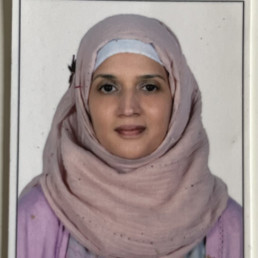
Written by Nabiha Mohamed
I am a British born Muslim Pakistani Geography teacher, who loves rocks and the Marvel Universe. I have spent 13 years living in Abu Dhabi but have now returned to the UK and am living in Bristol. I have taught in both comprehensive and independent schools, both of which I have enjoyed very much. I am a creative being who overthinks everything! I love to learn, and I have recently woken up to the fact that I am one of the few teachers of colour in this country and am now feeling the responsibility of this weighing heavy on my shoulders. Keen to ‘make a difference’ in the schools, I would love to connect with other teachers of colour in the UK.
We have been hit with comments like these throughout our lives. We have become accustomed to these ‘microaggressions’ in every aspect of our daily routines, and by ‘we’, I mean, people of colour.
As a British Asian Muslim woman (that’s a lot of labels already) born and raised in this country, I had never heard of the term ‘microaggressions’, until about 2 years ago in a CPD session at school. It was a turning point for me, in my career and my personal life. I have since been educating myself around the topics of unconscious bias, microaggressions and sense of belonging, particularly in schools. It’s been a rollercoaster ride since then, highs and lows in my teaching career, in my understanding of the issue and trying to work out how best to teach students to be assertive and staff to be ‘awake’. I am no professor in this area, I am not perfect, but I have grown to become passionate about this topic as one I can relate to and hopefully, an area I can help change in schools.
I have come to realise that many people who fire microaggressions at you, are often wonderful, kind, well-meaning people. They just don’t think about the gravity of their words; if you did have the courage to call them out on their inappropriate comments, they would be utterly devastated, which also makes us hold back on speaking up. Three recent examples I can think of (all said by adults):
- I can never learn the names of the girls who wear hijabs, they all look the same.
- I’m so glad we have one of you here now at school, the kids really needed someone like you.
- I loved culture day; it was my favourite day of the year! I loved all the costumes students wore; they were beautiful.
Costumes? I don’t wear my salwar kameez on Halloween, love.
I have delivered CPD sessions and assemblies on Unconscious Bias and Microaggressions to both staff and students recently, with the aim to give students of colour the confidence to speak up and say, ‘that’s not okay’ and to educate teachers on what many of their students go through daily as they go about their lives.
The thing is… I said in my assembly that I promised myself, whenever anyone was to say anything inappropriate directed at me, I would speak up and tell them. If ‘we don’t do this’, I said, ‘things will never change.’ Did I speak up when the above microaggressions came my way? Shamefully, no I did not. WHY, oh WHY did I not say anything?! Because, they were all lovely people who didn’t mean any harm. Because I, aged 47, did not know how to handle the situation at that exact moment, and if I couldn’t, how could I expect a child to?
However, I want to break the cycle. I want to have the confidence to say ‘errmmm, no’, and I want to teach students to be able to do the same in a respectful way, but I don’t know how to. We have school policies on explicit racism but there is nothing in means of reporting the implicit microaggressions from students or staff. Should there be? Is there a need? Do we ask our EDI Leader to speak to the guilty ones or should we have the guts to do it ourselves? But the interesting, or annoying thing amongst these questions in my head is, why am I struggling to speak up like I am the guilty one? I haven’t done anything wrong.

